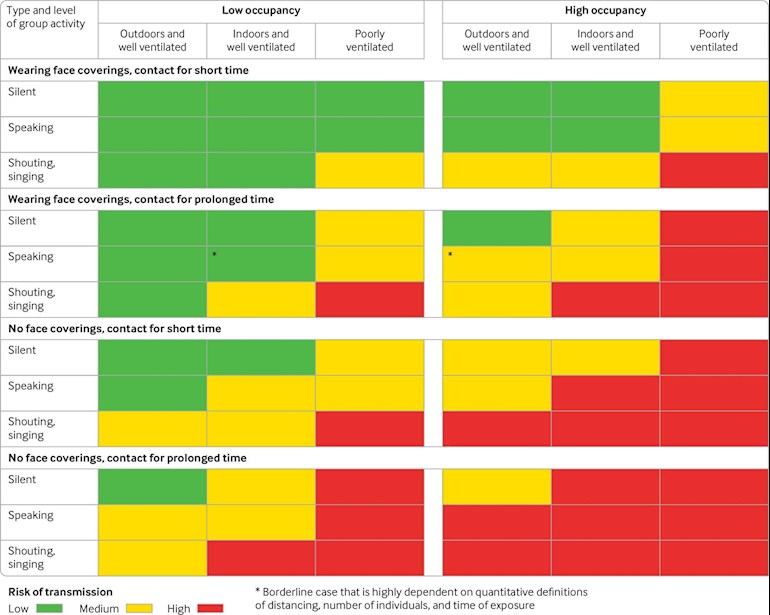The diagram above is from a review paper, published yesterday in the British Medical Journal bmj.com/content/370/bmj.m3223
The diagram brings together several variables which, according to the paper's authors, contribute to the relative risk of catching Covid in different social situations where in principle anyone nearby could infect you.
THIS REVIEW'S KEY MESSAGES:
- Current rules on safe physical distancing are based on outdated science
- Distribution of viral particles is affected by numerous factors, including air flow
- Evidence suggests SARS-CoV-2 may travel more than 2 m through activities such as coughing and shouting
- Rules on distancing should reflect the multiple factors that affect risk, including ventilation, occupancy, and exposure time
While you can use this info to moderate your own behaviour, DON'T expect the key messages to be incorporated into official control measures any time soon.
